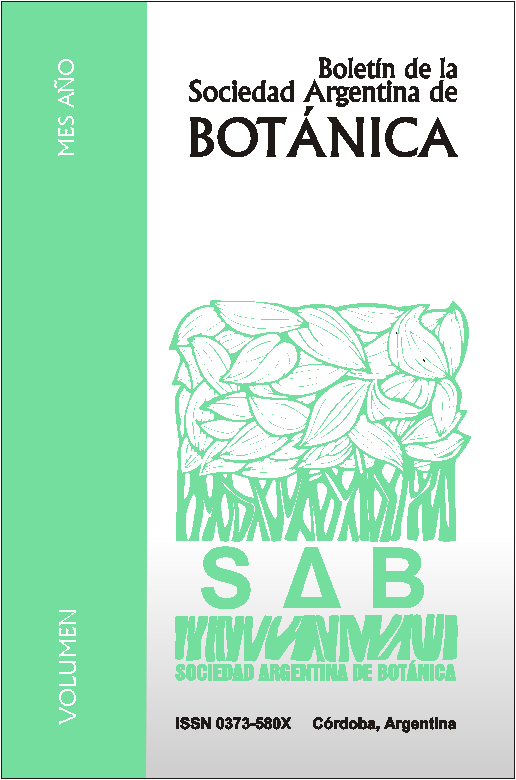Exomorphologic and micrographic characterization of Cheilanthes pruinata, a toxic species for livestock and medicinal for humans in the Andean region.
DOI:
https://doi.org/10.31055/1851.2372.v51.n1.14367Keywords:
Doradilla, Cheilanthes pruinata, intoxication, herbal medicine, micrographic methodAbstract
Exomorphologic and micrographic characterization of Cheilanthes pruinata, a toxic species for livestock and medicinal for humans in the Andean region. Exomorfologic and micrographic characterization of “doradilla”, toxic specie to livestock and also medicinal for humans in Andean region. The study aimed to define, through the application of the micrographic method, those anatomical characters of diagnostic value required to identify the aerial parts of the specie commonly referred as “doradilla” (Cheilanthes pruinata Kaulf.) cause of poisoning in small livestock in the NW of Argentina, and which is also used in herbal medicine as analgesic and anti-haemorrhagic in the Andes of Bolivia and Peru. Mild dissociated technique was applied to leaves, presumably toxics and/or medicinal organs. Results show that, in leaf blades, glandular hairs with one- and two-cell stalk and single-cell secretory head as well as the trilete spores and leptosporangia with vertical ring dehiscence are valid references; and in rachis and petioles, bicellular protector hairs with basal straight or angled cell and easily separable sharp apical cell, along with fibro and macroesclereidas. Such information is useful to recognize the species both in ruminal contents in case of suspicion of intoxication as for quality control of botanical herbal samples.
Downloads
Published
Issue
Section
License
Provides immediate and free OPEN ACCESS to its content under the principle of making research freely available to the public, which fosters a greater exchange of global knowledge, allowing authors to maintain their copyright without restrictions.
Material published in Bol. Soc. Argent. Bot. is distributed under a Creative Commons Attribution-NonCommercial-ShareAlike 4.0 International license.





